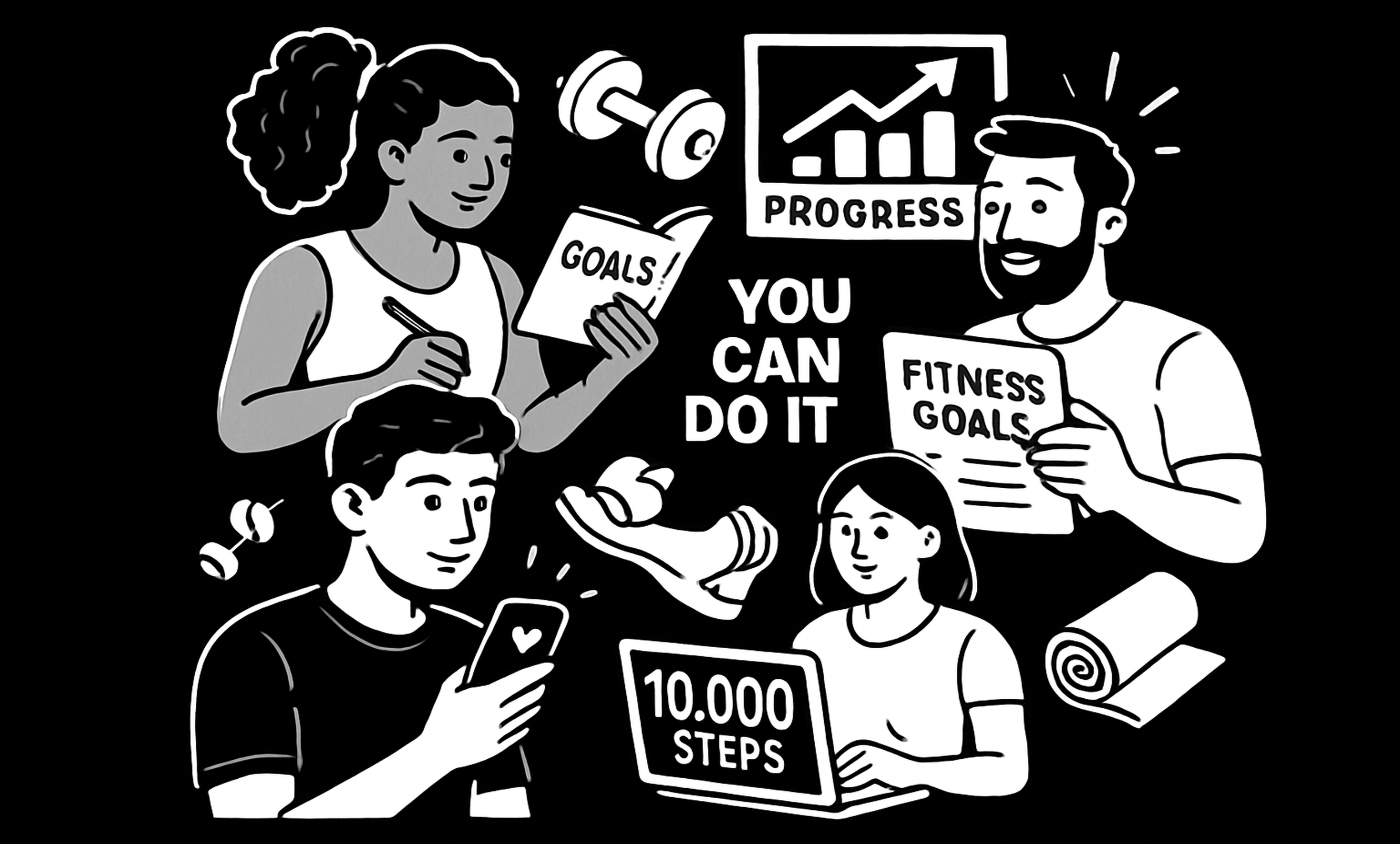Beginner Fitness Guide: Your Path to Success in 2025
Discover the ultimate beginner fitness guide for 2025. Set goals, design your plan, master nutrition, and stay motivated with proven strategies for success.


Getting Fit in 2025. Here’s What Actually Works.
Let’s be honest: starting a fitness journey can feel like a massive, confusing mess.
One minute, you're saving workout videos (that you never look at again) and telling yourself, “Monday, I’m on it.”
The next? You're three weeks in, sore, confused, and wondering if it’s even worth it.
But here's the thing: you don't need a 90-day transformation or a strict plan. You need a way to start that actually fits your life. This guide is built to help you do that: step by step. Unfiltered, unashamed. Just what works in 2025.
Step 1: Start With a Goal That Feels Like Yours
We’ve all done it. Setting a vague goal like “get in shape” or “lose 10kg” without much of a plan. The problem? Those goals don’t motivate us when life gets hard, which it will.
Instead, ask yourself:
- Why do I want this?
- What would feeling stronger or more energetic change in my life?
- What can I realistically commit to right now?
Your goal might be to lift your kids without back pain. Or to feel confident at the beach. Or to sleep through the night. All valid. All worth it.
Quick tip: Use the SMART framework (Specific, Measurable, Achievable, Relevant, Time-based).
Example: “I want to do three workouts a week for the next month so I can feel stronger and more focused at work.”
Step 2: Know Where You’re Starting
Don’t skip this part. Too many people jump into crazy workouts without knowing their baseline, then burn out. Or worse, get injured.
Try this quick personal check-in:
- Resting heart rate in the morning
- How far can you walk or jog in 10 minutes?
- How many push ups can you do in one go?
- Can you touch your toes or squat comfortably?
Track these somewhere. You’ll thank yourself later when you start to feel and see progress.
Step 3: Build a Simple Weekly Routine
Forget trying to workout every day. Your body (and brain) will thank you for a plan that’s easy to follow.
Here’s an example:

You don’t need hour-long sessions either. 20–30 minutes is enough to make serious progress. What matters is consistency.
Step 4: Eat Like You Respect Yourself
No need to go vegan, paleo, or intermittent fast unless it works for you. Instead:
- Build meals around protein, veggies, and slow carbs.
- Drink 2–3L of water a day.
- Eat before intense workouts (e.g. a proper meal a few hours before and/or a banana just before), and refuel after (e.g., eggs, rice, veg).
- Don’t panic if you mess up: just reset next meal.
⚠️ Supplements? Maybe. But start with food. Of course, I recommend protein powder, creatine and vitamin D but real food first.

Step 5: Track the Stuff That Matters
Here’s what most people track, rightly so:
- Weight
- Calories
- Steps
Here’s what actually keeps people going that people forget about:
- Energy levels
- Mood
- Sleep
- Consistency
Try journaling how you feel after workouts. Or use a basic habit tracker app. The more you see the patterns, the more you’ll want to keep going.
Step 6: Make Motivation a System, Not a Feeling
You don’t wait until you feel ready. You do it, and then you feel ready.
So:
- Lay your gym clothes out the night before.
- Put your workouts in your calendar like meetings.
- Stack your habits (e.g., stretch while your coffee brews).
- Tell a friend you’re committing to 3 days this week.
If you feel stuck? Go smaller. 10 minutes is still a win.
Step 7: Rest Like It’s Your Job
This part gets ignored, especially by beginners trying to “go hard.” But growth = stress + rest.
What helps:
- 1–2 full rest days per week
- 7–9 hours of sleep
- Mobility or walking instead of full rest
- Watching for red flags (always sore, low energy, getting snappy)
Recovery isn’t optional. It’s the thing that makes progress possible.

Step 8: Make It Social (Even If You Hate Gyms)
You don’t need to be the group class type. But you do need people in your corner.
That could be:
- A WhatsApp group that shares workouts
- A friend who walks with you once a week
- An online coach who checks in weekly
- Or even just your partner knowing your goals
When others know you’re trying, you’re far less likely to give up.
Step 9: Stay Flexible, Not Fragile
Life will get in the way. Travel. Stress. Kids. Burnout.
Here’s your mindset: don’t aim for perfect. Aim to keep going.
Missed a workout? Cool. Just get the next one in.
Fitness isn’t a 30-day challenge. It’s a lifestyle pattern you can return to, again and again.
Final Thought: Start Now. Start Small. Start Anyway.
Most people quit because they expect too much, too soon. But the truth?
- 15 minutes matters.
- Walking counts.
- A messy start beats a perfect delay.
So start where you are. Use what you have.
And build the strongest version of yourself—one simple rep at a time.
💬 Want help sticking to it?
If you’re juggling work, life, and trying to feel better in your own body, you don’t have to go it alone. At Mo7ion, we build sustainable fitness and performance plans that fit real life, not fantasy.
Book a free strategy call here if you're ready to stop starting over and start making it stick.




